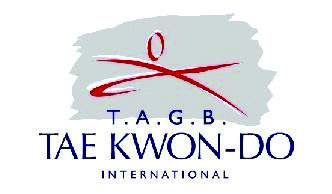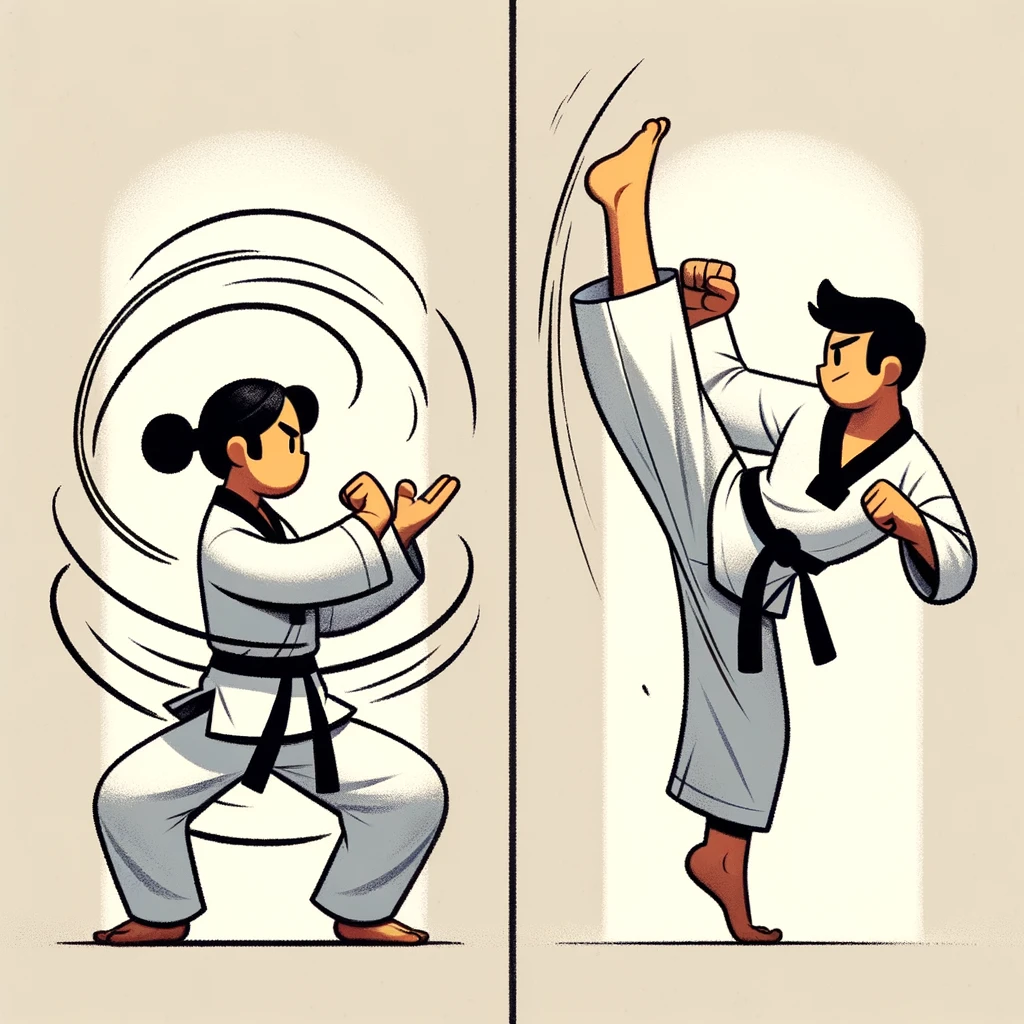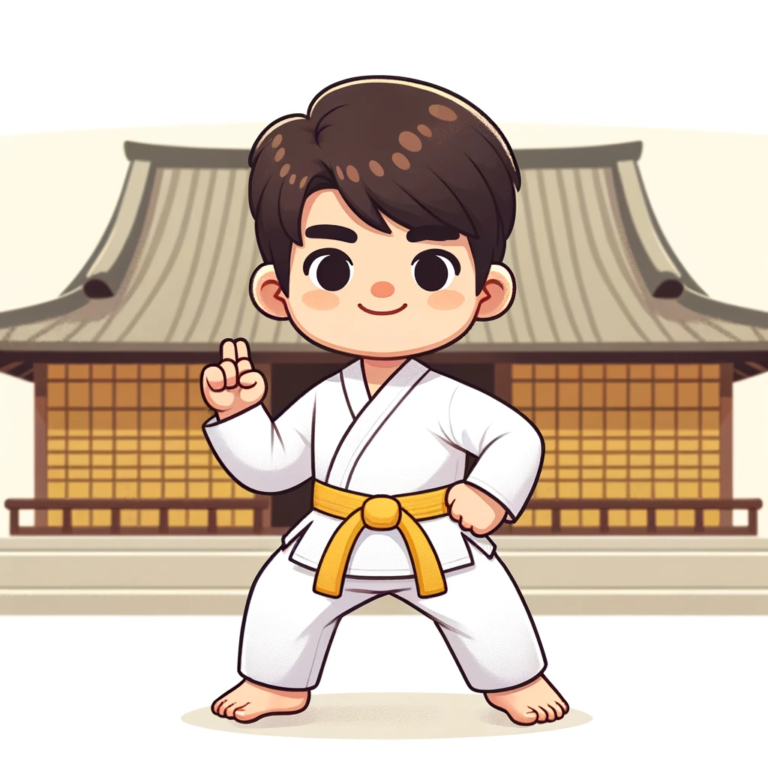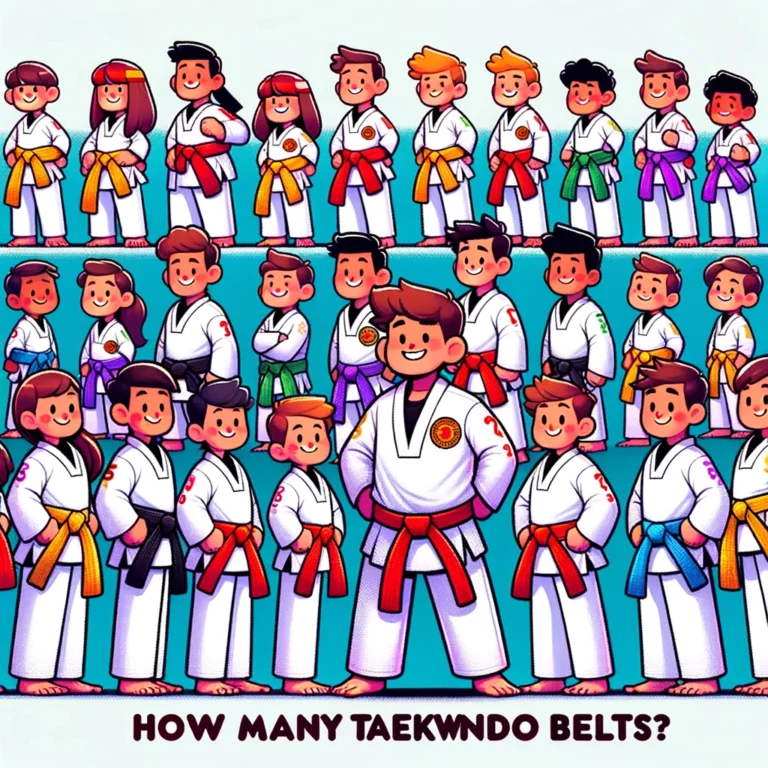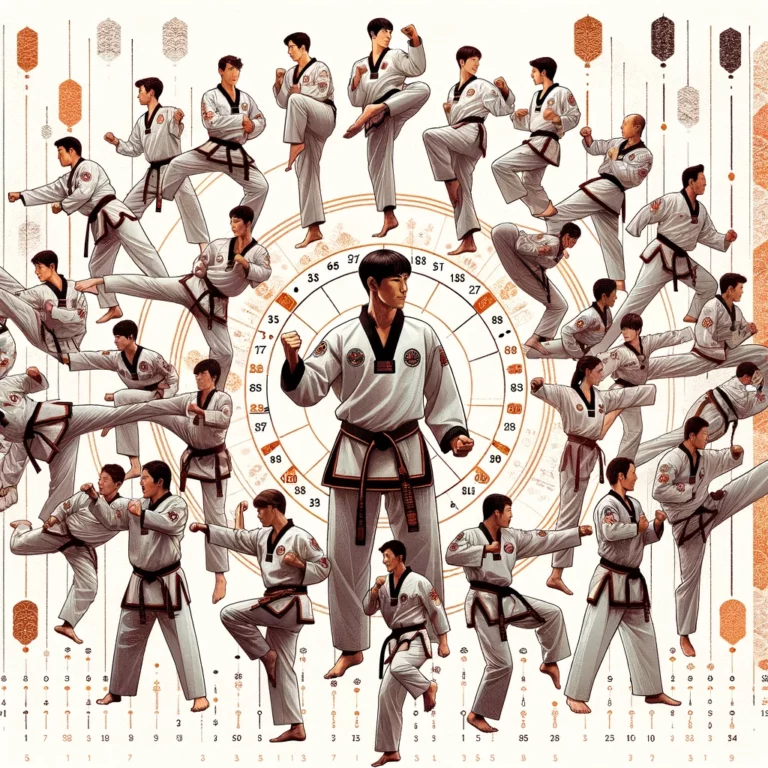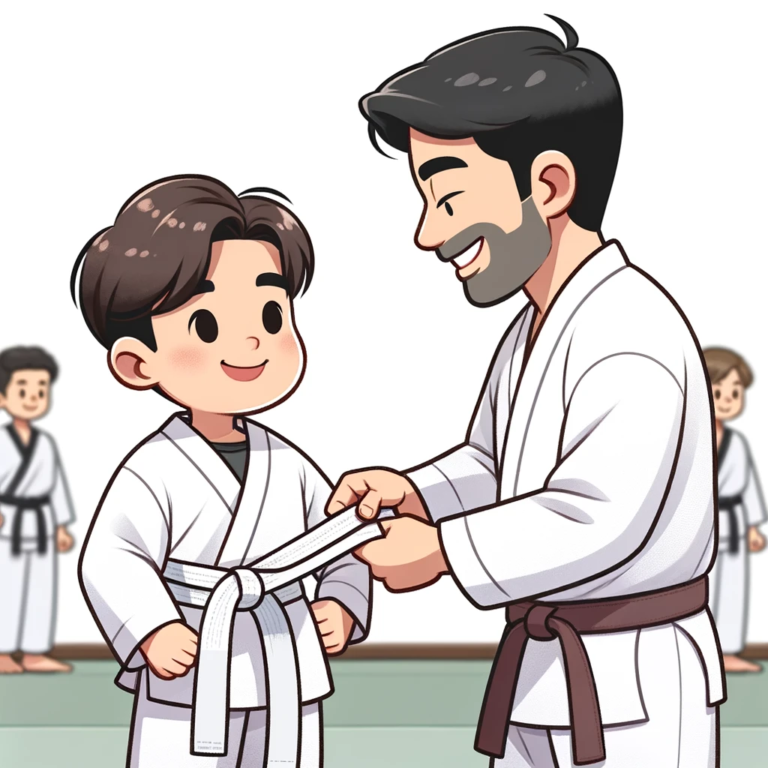Understanding the Roots: Kung Fu vs. Taekwondo
When venturing into the world of martial arts, the diversity and depth of different styles can be fascinating and bewildering. What is the difference between kung fu and Taekwondo? Kung Fu and Taekwondo are two of the most recognized and widely practised martial arts globally. Though both are respected for their historical richness and martial prowess, they are distinct in their origins, techniques, philosophies, and training methods.

Origin and History
| Kung Fu | Taekwondo |
|---|---|
| It emerged in Korea around the mid-20th century, integrating various martial arts forms from Korea and neighboring regions. Taekwondo is relatively modern but deeply rooted in ancient Korean martial arts traditions. | It emerged in Korea around the mid-20th century, integrating various martial arts forms from Korea and neighbouring regions. Taekwondo is relatively modern but deeply rooted in ancient Korean martial arts traditions. |
Techniques and Styles
| Kung Fu | Taekwondo |
|---|---|
| Taekwondo is renowned for its emphasis on high kicks, jumping and spinning kicks, and fast footwork. The style is more homogeneous than Kung Fu, with a strong focus on leg techniques and fluid, dynamic movements. | Taekwondo is renowned for its emphasis on high kicks, jumping and spinning kicks, and fast footwork. The style is more homogeneous compared to Kung Fu, with a strong focus on leg techniques and fluid, dynamic movements. |
Training and Philosophy
| Kung Fu | Taekwondo |
|---|---|
| Kung Fu training is not solely about fighting techniques but also personal development. It integrates Chinese philosophy, medicine, and moral codes, aiming for balance and harmony between the mind, body, and spirit. | Taekwondo training emphasizes discipline, respect, and self-improvement. It’s not just about physical prowess but also about developing strength of character, with a significant focus on courtesy, integrity, perseverance, and self-control. |
Understanding these fundamental differences sets the stage for a deeper exploration of how Kung Fu and Taekwondo manifest in practice, their global influence, and how they are perceived and adopted in contemporary martial arts culture.
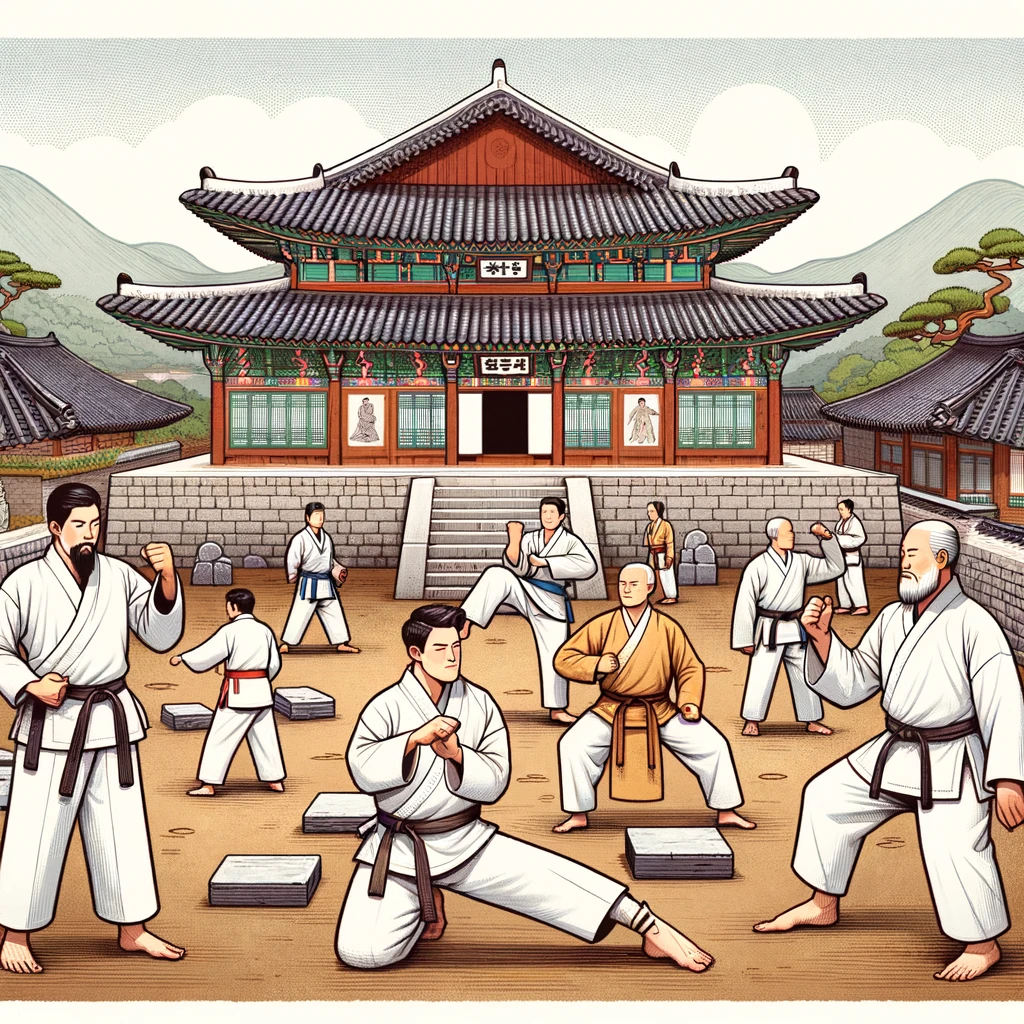
Key Takeaways Table
| Aspect | Kung Fu | Taekwondo |
|---|---|---|
| Origin | China | Korea |
| Focus | Varied; includes striking, grappling, and weaponry | Mostly striking, specifically kicks |
| Stance and Movement | Lower stances, fluid movements | Higher stances, fast and linear movements |
| Techniques | Wider variety, including animal styles | More focus on high and spinning kicks |
| Training | Emphasizes internal energy, meditation, and combat forms | Emphasizes sparring, patterns, and physical conditioning |
| Philosophy | Broad, with a focus on balance and harmony | Focus on respect, discipline, and self-improvement |
Martial arts, in their varied forms and styles, offer more than self-defence techniques; they provide a window into the cultures they originate and a pathway to personal growth and discipline. Two of the most popular martial arts, Kung Fu and Taekwondo, often become subjects of comparison due to their rich histories and unique characteristics. This article delves into the differences between Kung Fu and Taekwondo, offering insight into their origins, techniques, and philosophies.
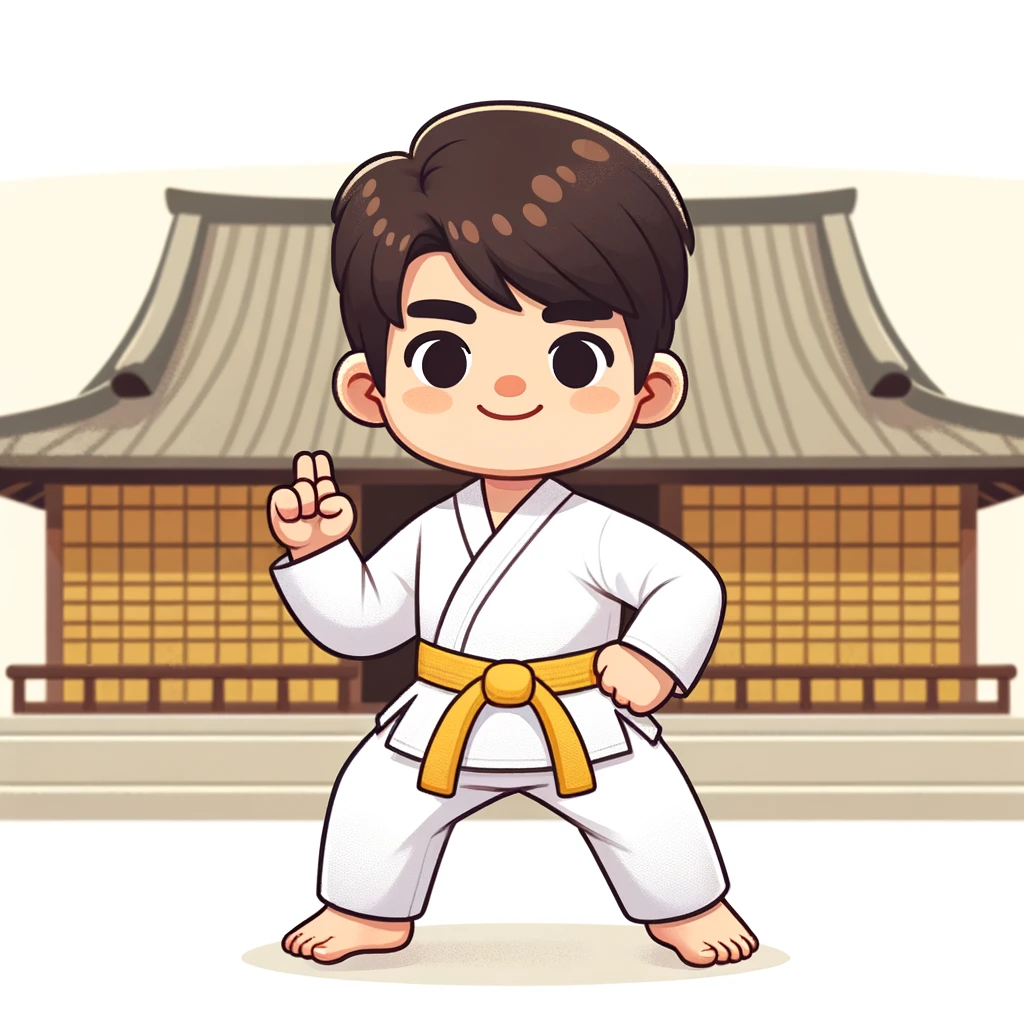
Origin and History
Kung Fu, also known as Chinese martial arts, has a storied history, its roots tracing back thousands of years in China. It encompasses a wide range of styles and schools, each with unique techniques and philosophies. The term “Kung Fu” is not limited to martial arts but refers to any skill achieved through hard work and practice.
Taekwondo, on the other hand, originated in Korea and is relatively younger. Developed in the mid-20th century, it combines traditional Korean martial arts elements with Karate and other martial arts influences. Taekwondo is known for its high kicks and rapid strikes, making it distinct in its style and approach.
Techniques and Training
The techniques and training methods in Kung Fu vary significantly among different schools. However, they generally include a mix of striking, grappling, and weaponry. Kung Fu also strongly emphasises internal training, focusing on harnessing internal energy (Qi) and includes elements of meditation and breathing techniques.
Taekwondo’s techniques are predominantly striking-based, with a particular emphasis on kicks. Training in Taekwondo includes learning patterns (Poomsae), sparring (Kyorugi), and breaking (Kyokpa), alongside physical conditioning. The art is known for its fast-paced and high-reaching kicks, including spinning and jumping techniques.
Stance and Movement
Kung Fu is known for its fluid, circular movements and lower stances, often inspired by animal movements. This is evident in styles such as the Tiger, Crane, or Dragon styles, each mimicking the respective animal’s movements and characteristics.
Taekwondo, in contrast, features more linear movements and generally higher stances. The art emphasizes speed, agility, and the ability to deliver powerful strikes from a distance. Its practitioners are trained to move quickly and efficiently, focusing on maintaining balance and control.
Philosophy and Mental Training
The philosophies underlying Kung Fu and Taekwondo are as diverse as their physical techniques. Kung Fu encompasses a broad spectrum of philosophies, often influenced by Taoist, Buddhist, and Confucian thought. Its practice is about physical prowess and achieving balance, harmony, and understanding of oneself and the surrounding world.
While also emphasizing physical skill, Taekwondo strongly emphasises discipline, respect, and self-improvement. Its philosophy is encapsulated in the Five Tenets of Taekwondo: courtesy, integrity, perseverance, self-control, and indomitable spirit.
In summary, while Kung Fu and Taekwondo are highly respected martial arts, they differ significantly in their origins, techniques, stances, and philosophies. Understanding these differences can help individuals choose the path that best suits their interests and goals in the martial arts journey.
Understanding the martial arts landscape can be intriguing, especially when exploring the characteristics that define and distinguish various styles. In this article, we delve into the distinctive realms of Kung Fu and Taekwondo, two martial arts that, while sharing the fundamental ethos of self-discipline and defence, present unique philosophies, techniques, and origins. Our exploration aims to enlighten enthusiasts and practitioners about the nuances that make each art form unique in its own right.
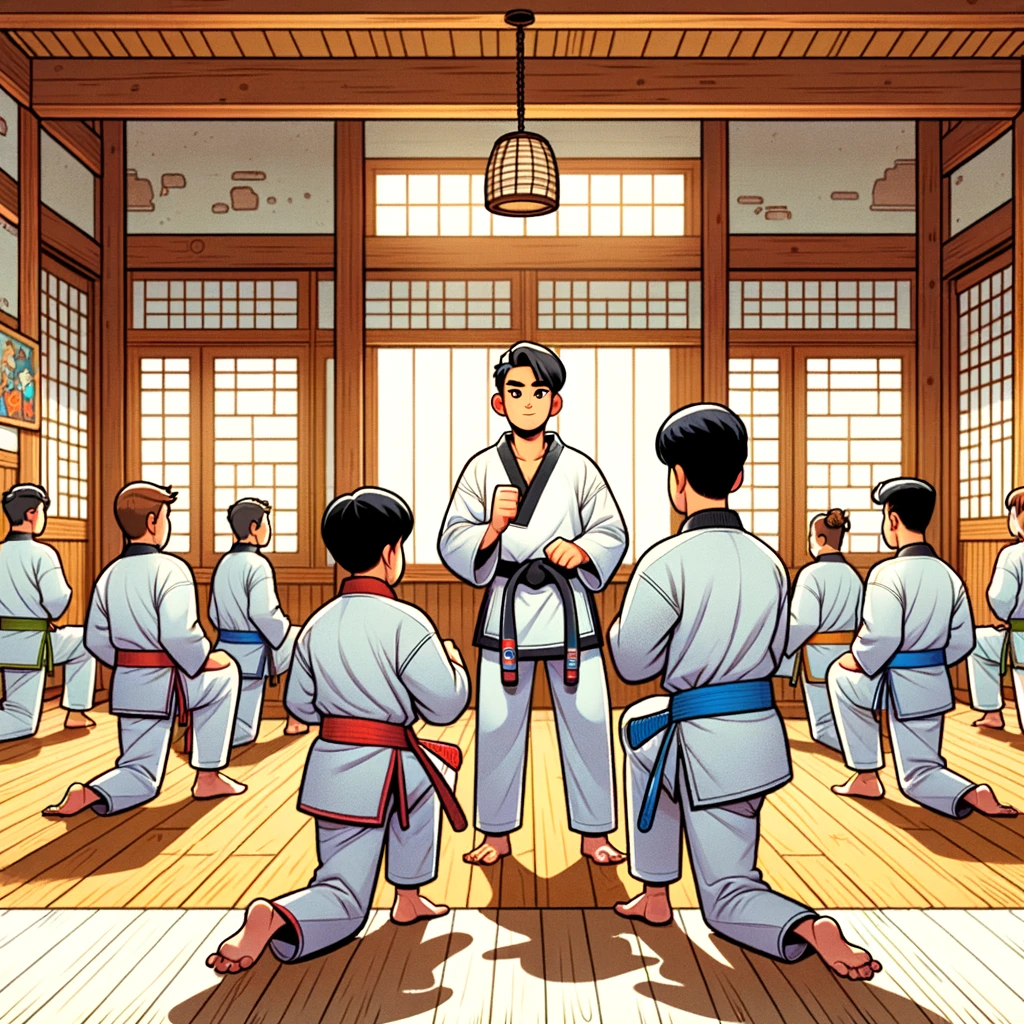
Historical Roots and Philosophical Foundations
Kung Fu:
- Origin: Kung Fu, also known as Gong Fu, is deeply embedded in the rich soils of Chinese history and tradition.
- Philosophy: It’s not just a physical discipline but a manifestation of the ancient Chinese philosophy that integrates moral and spiritual reflections into its practice.
- Styles: The art form is known for its numerous styles, each reflecting China’s diverse cultural and geographical landscapes. Styles like Shaolin, Wing Chun, and Tai Chi emphasize fluid motion, internal strength, and spiritual balance.
Taekwondo:
- Origin: Originating from Korea, Taekwondo is a relatively younger martial art than Kung Fu but is revered for its dynamic nature and emphasis on high kicks and rapid strikes.
- Philosophy: Taekwondo is not just a physical combat technique; it’s a way of life that instils values of respect, discipline, and perseverance in its practitioners.
- Global Recognition: It gained immense popularity in the 20th century and has the distinction of being an Olympic sport, reflecting its worldwide appeal and structured approach.
Technique, Training, and Execution
Kung Fu:
- Technique: It’s known for its fluidity and grace, often imitating movements from various animals (like the tiger, crane, or snake).
- Training: Practitioners spend years mastering the physical movements and internal energy, known as ‘Qi’, and meditation techniques integral to Kung Fu.
- Weapons: Traditional weapons like the Jian (sword), Dao (sabre), and staff are often incorporated into the training, adding to its rich and diverse technique repertoire.
Taekwondo:
- Technique: Taekwondo is characterized by its dynamic, high-energy techniques focusing on head-height kicks, jumping and spinning kicks, and fast footwork.
- Training: Training emphasizes speed, agility, and strength, with a structured belt grading system that marks the practitioner’s progression.
- Sparring and Competitions: Competitive Taekwondo is very popular, with sparring (Kyorugi) and patterns (Poomsae) forming essential components of Taekwondo tournaments.
